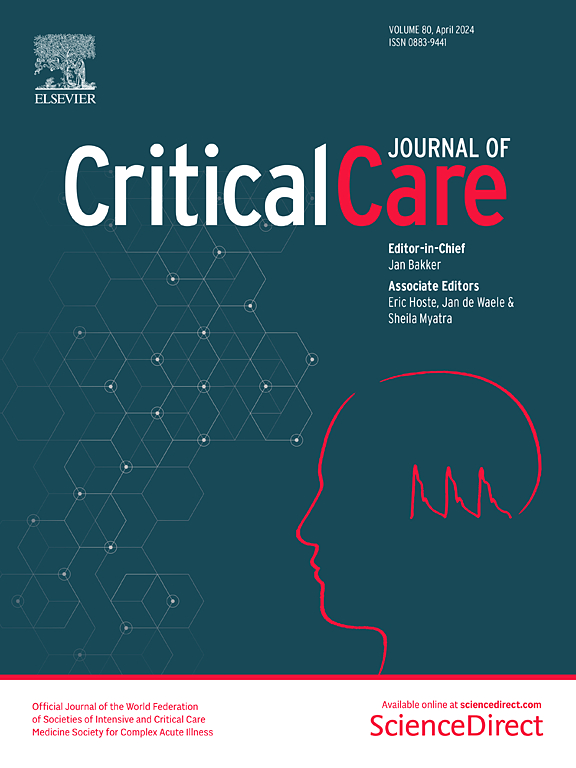Study on the diagnostic role of exosome-derived miRNAs in postoperative septic shock and non-septic shock patients
IF 8.8
1区 医学
Q1 CRITICAL CARE MEDICINE
引用次数: 0
Abstract
Diagnosing septic shock promptly is essential but challenging, especially due to its clinical similarity to non-septic shock. Extracellular vesicle-derived miRNAs may serve as biomarkers to distinguish septic shock from non-septic shock, providing a more accurate diagnostic tool for postsurgical patients. This study aims to identify extracellular vesicle-derived miRNA signatures that differentiate septic shock from non-septic shock in postsurgical patients, potentially improving diagnostic accuracy and clinical decision-making. A multicentre, prospective study was conducted on miRNA profiles in shock patients. Two cohorts were recruited from the Intensive Care Units of two Spanish hospitals: a discovery cohort with 109 patients and a validation cohort with 52 patients. Plasma samples were collected within 24 h of shock diagnosis and subjected to miRNA sequencing. High-throughput sequencing data from the discovery cohort were analysed to identify differentially expressed miRNAs. These findings were validated via qPCR in the validation cohort. Thirty miRNAs were identified as significantly differentially expressed between septic and non-septic shock patients. Among these, six miRNAs—miR-100-5p, miR-484, miR-10a-5p, miR-148a-3p, miR-342-3p, and miR-451a—demonstrated strong diagnostic capabilities for septic shock. A combination of miR-100-5p, miR-148a-3p, and miR-451a achieved an area under the curve of 0.894, with qPCR validation in the validation cohort yielding an area under the curve of 0.960. This study highlights extracellular vesicle-derived miRNAs as promising biomarkers for differentiating septic from non-septic shock. The identified three-miRNA signature has significant potential to enhance septic shock diagnosis, thereby aiding in timely and appropriate treatment for postsurgical patients.关于外泌体衍生 miRNA 在术后脓毒性休克和非脓毒性休克患者中的诊断作用的研究
本文章由计算机程序翻译,如有差异,请以英文原文为准。
求助全文
约1分钟内获得全文
求助全文
来源期刊

Critical Care
医学-危重病医学
CiteScore
20.60
自引率
3.30%
发文量
348
审稿时长
1.5 months
期刊介绍:
Critical Care is an esteemed international medical journal that undergoes a rigorous peer-review process to maintain its high quality standards. Its primary objective is to enhance the healthcare services offered to critically ill patients. To achieve this, the journal focuses on gathering, exchanging, disseminating, and endorsing evidence-based information that is highly relevant to intensivists. By doing so, Critical Care seeks to provide a thorough and inclusive examination of the intensive care field.
 求助内容:
求助内容: 应助结果提醒方式:
应助结果提醒方式:


